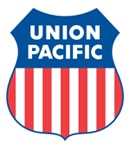Decades ago, the chairman of New York Central Railroad complained that while freight could move cross country without being transferred from one boxcar to another, transcontinental passengers often had to change trains in Chicago.
Even today, on Amtrak, passengers must change trains in Chicago.
A similar complaint is heard regarding intermodal passenger transportation — the separation of terminals for train and motor coach transportation. In Washington, D.C., for example, an intercity bus terminal is blocks from Union Station, which hosts Amtrak and commuter rail.
In St. Paul, Minn., the intermodal passenger problem is being solved.
The Ramsey County Regional Railroad Authority has broken ground on a $243 million multi-modal transportation facility in St. Paul, reports progressiverailroading.com.
The city’s 1920s-era Union Depot train station is slated to bring together rail, bus, motor vehicle, bicycle and pedestrian traffic by 2012, reports progressiverailroading.com. Local, state and federal funds are financing the project.
Amtrak intends to dispatch its Empire Builder through the renovated terminal, which will also serve as a transfer point for light-rail, Metro Transit and intercity bus service — and, eventually, be a hub for hoped-for high-speed trains between the Twin Cities and Chicago.
